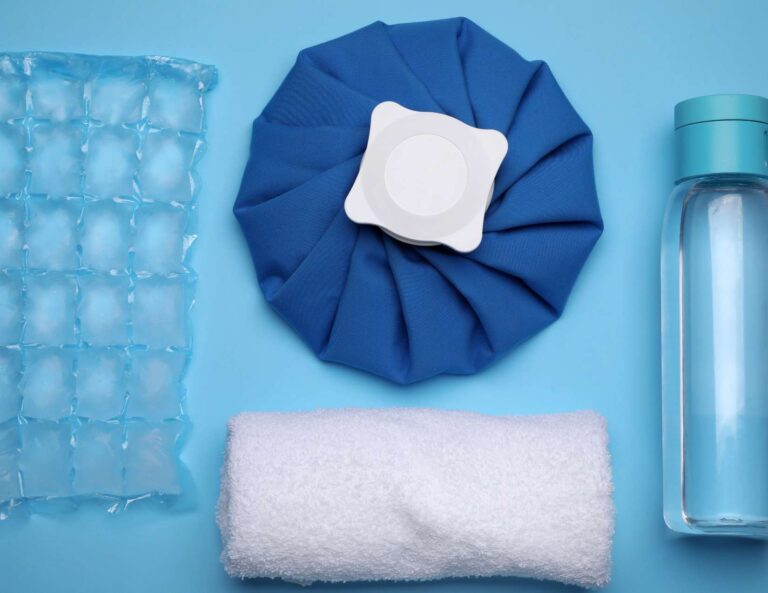Discover the Best Shoes for Hip Bursitis
As we venture through life, our bodies can sometimes bear the brunt of our activities, and our hips are no exception. A common issue that can affect our hips is bursitis, an uncomfortable and sometimes debilitating condition.
Today, let’s delve into the world of hip bursitis, and most importantly, discover how the best shoes for hip bursitis can make a world of difference.
Table of Contents
Understanding Hip Bursitis
If you’re reading this guide, chances are you’ve either been diagnosed with hip bursitis or you know someone who has. Either way, understanding the condition is the first step towards managing it.
Hip bursitis, also known as trochanteric bursitis, is an inflammatory condition of the bursa located around the hip joint. The bursa are small, fluid-filled sacs that cushion the muscles, tendons, and bones near the joints.
Hip bursitis can be caused by a variety of factors, including repetitive motions, prolonged pressure on the hip, direct injury to the hip, poor postural habits, and even certain diseases such as rheumatoid arthritis or gout.
The symptoms can vary, but they often include pain, swelling, and stiffness around the hip joint.
One of the most challenging aspects of dealing with hip bursitis is how it can affect your daily life. Simple activities such as walking, climbing stairs, or even sitting for extended periods can become difficult.
But don’t despair, because understanding the condition is the first step towards finding solutions.
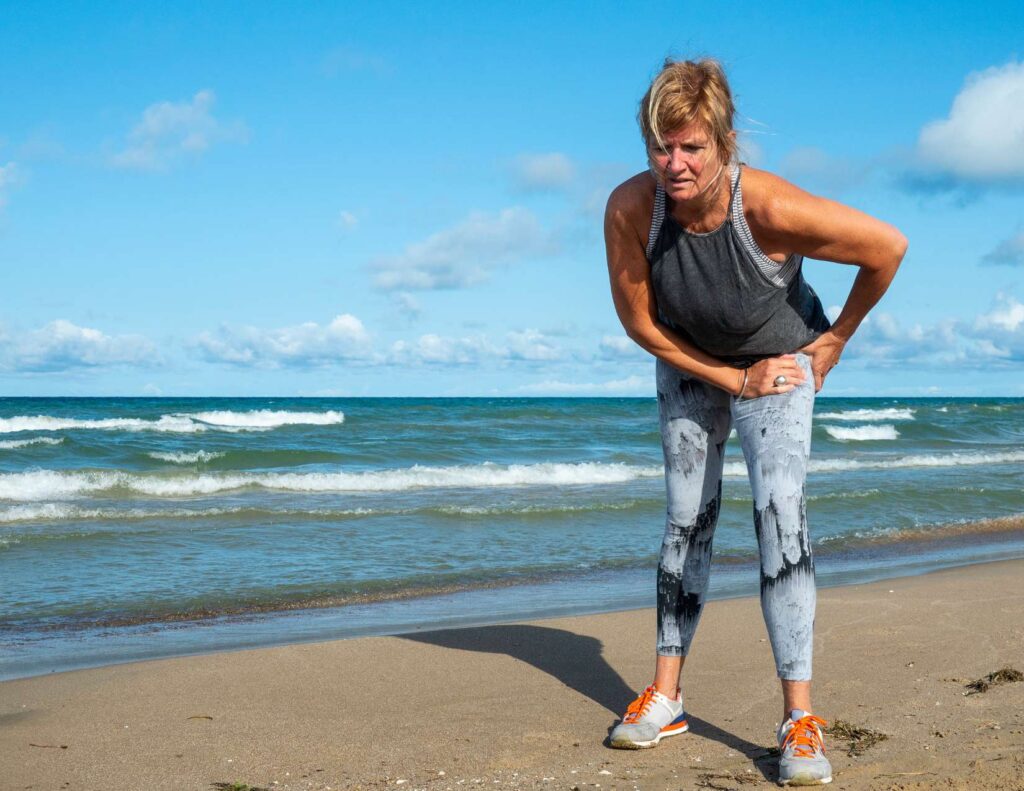
Effects of Hip Bursitis on Mobility
Hip bursitis can significantly impact your mobility and quality of life. The pain and discomfort can make it difficult to perform daily activities, and it can limit your physical activity.
This, in turn, can lead to a sedentary lifestyle, which can exacerbate the situation further.
Frequent pain can lead to a decrease in your range of motion, making it more difficult for you to move around freely. The pain can also make it hard to find a comfortable position to sleep in, leading to sleep disturbances and fatigue.
Moreover, as we tend to compensate for the pain by altering our gait or posture, this can result in other conditions such as lower back pain, lower limb pain, knee pain, or even foot problems.
Certain foot conditions such as plantar fasciitis can be caused by repetitive use or trauma due to a misalignment in the feet. Flat feet can cause joint pain due to the feet having to overcompensate for a lack of arch support.
This is where the importance of proper footwear comes in.
The Importance of finding the best shoes for Hip Bursitis
Just as a well-constructed house starts with a solid foundation, the key to managing hip bursitis often begins with your feet. The type of shoe you wear can have a significant impact on your comfort levels and mobility.
The wrong shoes can exacerbate your hip bursitis symptoms, while the best shoes for hip bursitis can help relieve pain and improve your gait.
Good footwear can provide the necessary support and cushioning to your feet, reducing the impact on your hips as you walk or stand.
The best shoes for hip bursitis can also help distribute your body weight evenly, reducing the pressure on your hip joint. Furthermore, it can help correct your gait and alignment, preventing any compensatory movements that may lead to other problems.

Features of the Best Shoes for Hip Bursitis
When it comes to the best shoes for hip bursitis, there are certain features to look for. Firstly, they should offer excellent arch support. This helps to distribute weight evenly across your foot, reducing pressure on your hip joint.
Secondly, the best shoes for hip bursitis should have good cushioning. This can help absorb the impact of each step, reducing the shock that travels up your leg to your hip. Look for shoes with cushioning made of materials such as EVA or memory foam.
Thirdly, a spacious toe box is crucial. It allows your toes to spread naturally, providing a stable base for your foot and reducing pressure on your hip.
Lastly, lightweight shoes with flexible sole are key. This allows you to move naturally, helping to take the strain off your hip joint and reducing pain associated with hip bursitis.
Top Recommendations: Best Shoes for Hip Bursitis
There are several shoes on the market that are especially good for those suffering from hip bursitis.
Each of the best shoes for hip bursitis has its unique features, but they all share the common traits of excellent support, cushioning, and a roomy toe box. They also have positive reviews from users with hip bursitis who have found relief with these shoes.
Best Running Shoes for Hip Bursitis
Running with hip bursitis can be difficult, so it’s important to find the right shoes.
The Brooks Adrenaline GTS 21 is a great option for runners because it has a roomy toe box and plenty of cushioning, as well as an 8mm drop which helps reduce pressure on your hips.
The Asics Gel-Nimbus 22 and the Saucony Kinvara 10 are also good choices for those with hip bursitis, as they both offer plenty of cushioning and support.
The Mizuno Wave Rider 23 is another great option, as it’s an incredibly lightweight shoe that still provides ample cushioning for your feet.
All of the best shoes for hip bursitis have reviews from people who have found relief from their hip pain while running in them, so it’s a good idea to try out some different options and see which one works best for you.
Be sure to get the correct size and wear inserts if needed, as this will help reduce pressure on your hips and make running more comfortable.
Best Walking Shoes for Hip Bursitis
For those with hip bursitis, finding the right pair of walking shoes is key.
The New Balance 860v10 and Brooks Adrenaline GTS are both excellent choices for walkers looking for cushioning and great support.
Both shoes provide ample shock absorption to reduce impact on your hips, while still being lightweight enough that they won’t tire out your legs during long walks.
Before making any purchase, it’s always best to try on different shoes yourself to see which pair feels most comfortable for your feet and hips.
Consider purchasing insoles if you have extra arch support needs, as well as socks with cushioning on the heels and balls of your feet. Lastly, don’t forget to replace walking shoes after 300–500 miles of usage or every 6 months, whichever comes first!
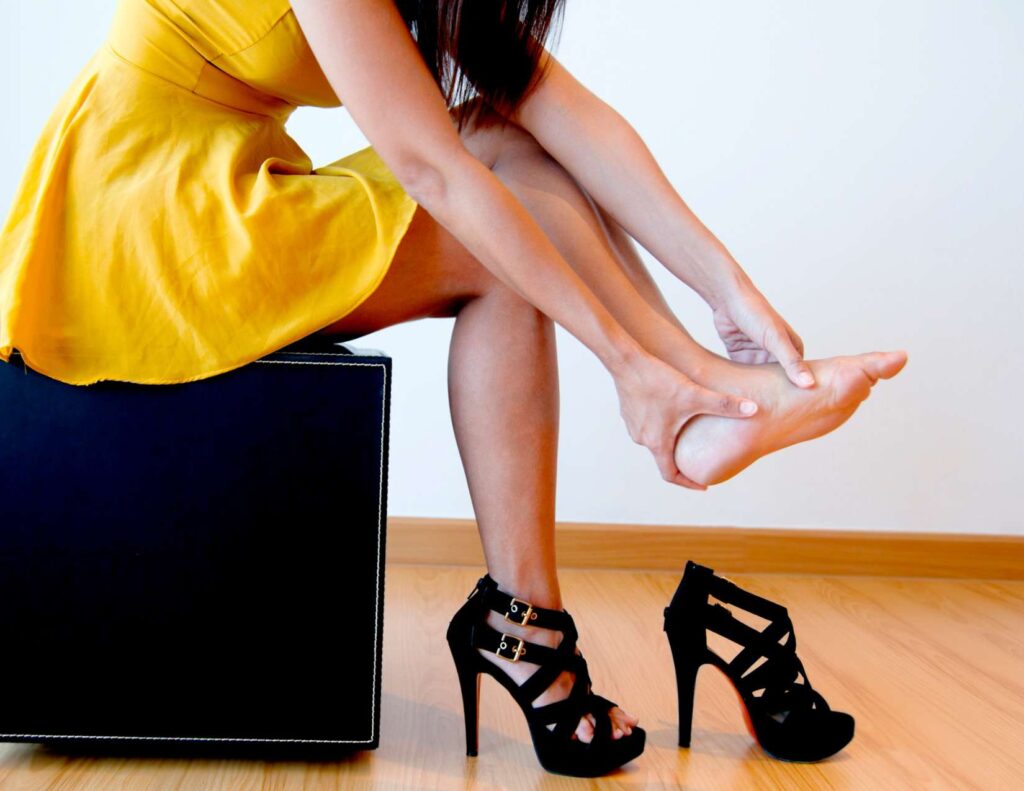
The Best Dress Shoes for Hip Bursitis:
If you have hip bursitis, it’s important to find a dress shoe that offers extra support. Consider buying shoes with shock absorption technology and a deep heel cup for improved stability.
Shoes with removable insoles are also great if you need to adjust the arch of the insole depending on your level of activity or pain.
Leather-soled dress shoes are generally the best choice, as they provide more cushioning and flexibility than synthetic materials. Additionally, look for dress shoes with wider toe boxes to allow your toes to move freely while walking.
Finally, be sure to replace dress shoes every few months or when the soles begin to wear down. It’s best to avoid high heels and shoes with pointed toes as these can put additional strain on the hip joint.
Taking these steps should help you find a dress shoe that will provide extra support and reduce your risk of developing bursitis symptoms.
Best Men’s Shoes for Hip Bursitis:
1. Orthotic-Friendly Dress Shoes: If you suffer from hip bursitis, it’s important to look for dress shoes that provide adequate arch support and cushioning. Look for orthotic-friendly models which can easily accommodate custom orthotics or heel cups designed to reduce pressure on the hip joint.
2. Orthopedic Shoes: Orthopedic shoes are designed to cushion and support the feet during movement. They usually have a stiff sole that provides good arch support and may feature extra padding in areas susceptible to pressure.
3. Leather-soled Dress Shoes: Leather-soled dress shoes can provide additional cushioning and flexibility compared to synthetic materials, which can be beneficial when dealing with bursitis symptoms. Look for shoes with good arch support and a wide toe box to provide extra room for your toes.
4. Slip-on Shoes: Slip-on shoes are generally more flexible than lace-up styles, making them a great option if you have hip bursitis. The ability to slip on and off with ease can also be beneficial if you experience pain when bending to tie your laces.
Best Women’s shoes for hip bursitis:
1. Comfort Shoes: Comfort shoes are designed to provide maximum cushioning and shock absorption, making them an ideal choice for people suffering from hip bursitis. Look for shoes with a thick sole and plenty of arch support.
2. Slip-on Shoes: Slip-on shoes are generally more flexible than lace-up styles, making them a great choice for people with hip bursitis.
3. Orthopedic Shoes: Orthopedic shoes are specifically designed for people with hip bursitis, providing extra cushioning and arch support to help reduce the stress on your hips when walking.

Shoe Accessories for Hip Bursitis – Orthotics and Inserts
Using custom orthotics or shoe inserts is another way to reduce bursitis pain. Orthotics provide extra cushioning and support, so that the pressure of walking is evenly distributed across the feet and hips.
As with your other shoes, be sure to replace custom orthotics every few months or when they begin to wear down. In addition, make sure to choose an orthotic that fits your foot properly to avoid foot pain.
If your orthotics are too tight, they can increase pressure on the hip bursa and cause more pain. You may also want to look for shoes that have built-in arch support or extra cushioning in the heel.
Expert Advice: The Best Shoes for Hip Bursitis
As a chiropractor, I highly recommend finding the best shoes for hip bursitis that have superior arch support, cushioning in the heel, and a wide toe box. Be sure to buy shoes that fit properly and replace them every few months.
Orthotics can also be beneficial for people suffering from bursitis pain. Make sure to choose an orthotic that fits your foot properly. If the orthotic is too tight, it could contribute to increased pain.
Additionally, look for shoes that are designed to absorb shock and reduce stress on the hip bursa. Shoes with a wide base of support will also help distribute weight more evenly and minimize pressure on the bursa.
Stay away from hard-soled shoes or flip flops as these can lead to excessive pronation which can worsen hip bursitis and other biomechanical issues.

How to Choose the best shoes for Hip Bursitis
Choosing the best shoes for hip bursitis involves much more than simply picking a pair off the shelf. You should consider factors such as your foot shape, arch type, and personal comfort preferences.
If you have hip bursitis, it’s important to look for shoes with plenty of cushioning and support.
Look for shoes that are designed specifically for runners, as they often come with features such as a lightweight design, extra cushioning in the heel, good arch support, and a supportive midsole.
Additionally, look for shoes that fit your foot shape and size perfectly. If your feet are wide, look for a wider toe box to allow your toes to have room to spread out.
You should also consider material when choosing the best shoes for hip bursitis. Look for shoes with breathable uppers made of materials such as mesh and leather, as they can help keep your feet cool and dry even during long runs or workouts.
Avoid shoes made entirely of synthetic material, as they often lack the necessary breathability and can cause your feet to overheat.
Finally, make sure you look for a shoe that has good traction on all surfaces. Shoes with a thick rubber sole will provide better grip on wet or slippery surfaces.
You may also want to consider getting shoes with studs if you plan to run on grass or muddy surfaces as these will provide extra grip to prevent you from slipping.
By taking the time to select a shoe with all of these features, you’ll be able to ensure that your feet remain comfortable and supported during any activity, helping to alleviate hip bursitis pain.
Remember to always try on shoes before buying them and get advice from a qualified shoe fitter if necessary.
When shopping, take the time to try on various models and walk around in them. Pay attention to how your feet feel in the shoes and whether they provide sufficient support and cushioning. Remember, comfort is key!
Caring for Your Shoes to Maximize Benefit for Hip Bursitis
To get the most out of your shoes, proper care is important. Regularly clean them to keep them in good shape. Also, rotate your shoes to allow them to air out and regain their shape.
Most importantly, know when to replace your shoes. Over time, the support and cushioning can wear down, reducing their effectiveness. As a rule of thumb, consider replacing your shoes every 300-500 miles or every six months.
By following these tips, you can ensure that your shoes are providing the maximum benefit for hip bursitis. With the right shoes and proper care, you can reduce irritation and pain in your hips for improved comfort.
Where to Buy the Best Shoes for Hip Bursitis
You can find the best shoes for hip bursitis in various retail stores or online. Websites like Amazon, Zappos, and the manufacturers’ own websites often offer a wide range of sizes and colors.
Also, look for specialty footwear stores that offer shoes specifically designed to support and relieve hip bursitis. These stores may have knowledgeable staff who can help you choose the best option for your lifestyle and budget.
Remember to check the return policy before making a purchase. Since comfort is so subjective, you might need to try a few pairs before finding the perfect one for you.
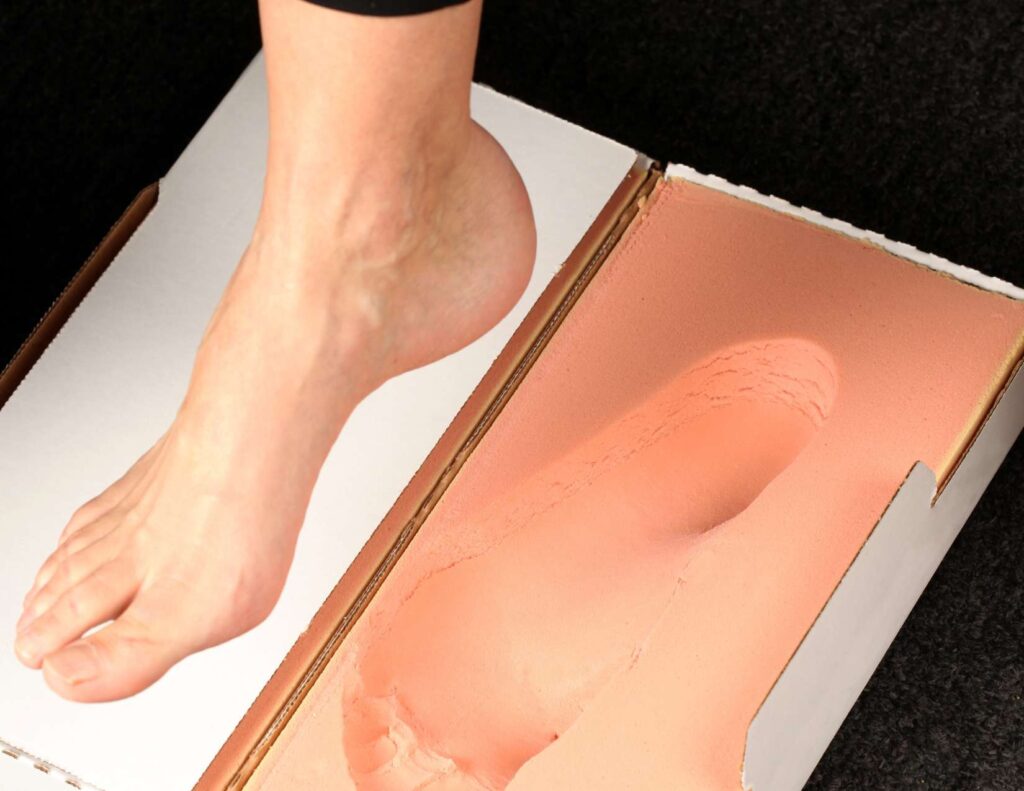
Alternative treatments and lifestyle for hip bursitis
These include rest, stretching and strengthening exercises, physical therapy and anti-inflammatory medications. Chiropractic care, acupuncture and massage therapy are also said to be beneficial.
- Chiropractic care for hip bursitis is said to reduce inflammation and restore mobility of the joints.
- Acupuncture for hip bursitis can help to reduce inflammation and improve the range of motion in the hip joint.
- Massage therapy can also be beneficial in reducing pain and stiffness associated with hip bursitis as it increases circulation around the joint.
- Physical Therapy is also recommended for hip bursitis, as it can help to improve flexibility, range of motion and muscle strength.
- Strengthening exercises can help to reduce stress on the joint and improve stability in the hip area.
- Stretching exercises can help to reduce tension and improve flexibility in the affected area.
If you are considering these alternative treatments, it is important to talk with your doctor before beginning. They can help you determine the best course of treatment for your condition.
Additionally, they can also monitor your progress and adjust the treatment plan if necessary. It is important to follow their advice and to keep up with any recommended treatments in order to achieve the best results.
Finally, lifestyle changes such as incorporating exercise, stretching and eating a healthy diet can also help to reduce inflammation, improve joint function and decrease pain.
Taking part in low-impact activities such as yoga or water aerobics can aid in increasing range of motion and strength. Additionally, proper posture when standing or sitting will help you avoid additional strain on the hip area.
Overall, these lifestyle changes coupled with physical therapy can help to relieve hip pain and restore mobility.
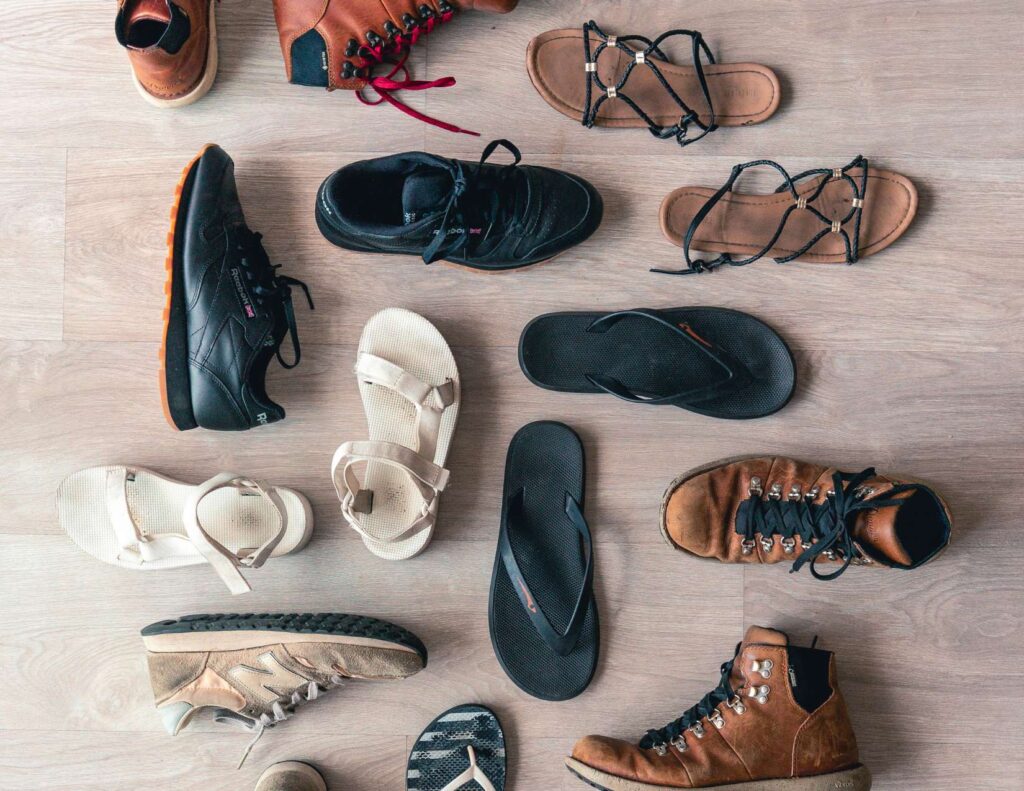
Conclusion: Walk Comfortably Despite Hip Bursitis
Always remember that the best treatment for hip bursitis is prevention. Finding the best shoes for hip bursitis, regular stretching exercises, and being aware of your body’s limits can help you avoid this painful condition altogether.
Hip bursitis can be a painful and debilitating condition, but the right footwear can make a significant difference. By choosing the best shoes for hip bursitis, you can improve your mobility, reduce your pain, and get back to enjoying life.
Remember, the journey to comfort begins with a single step. So take that step today, in the right pair of shoes. Good luck and happy shopping!





